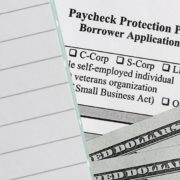Parking Expenses for Qualified Transportation Fringes
The Tax Cuts and Jobs Act (TCJA) amended the tax code, making certain parking-related expenses for qualified transportation fringes nondeductible. Additionally, for tax-exempt organizations, TCJA reform included an increase in the amount of the unrelated business taxable income attributable to the nondeductible parking expenses. These parking expenses to an employer can occur in two different scenarios:
Employer Pays a Third Party for Employee Parking Spots
Generally, any amounts paid to a third party on behalf of an employee are nondeductible expenses to a for-profit entity, or an increase in the unrelated business income of a not-for-profit entity. However, if the amount of benefits provided is in excess of $260 per month, the amount that exceeds $260 becomes taxable to the employee. This excess is deductible to the employer.
Employer Owns or Leases All or a Portion of a Parking Facility
The second scenario applies if an employer maintains a parking lot for employee parking, a situation that most organizations in northern New England will find themselves in. The IRS has stated in its interim guidance, Notice 2018-99, that any reasonable method may be used to calculate the deduction disallowance for parking-related expenses (depreciation is not considered a parking-related expense). However, the IRS illustrates a four-step process in the Notice for a safe harbor method. A summary of the safe harbor method includes:
Step 1: Calculate the disallowance for reserved employee spots
- These are spots identified as employee parking only. These spots are disallowed a deduction for parking expenses allocated.
Step 2: Determine the primary use of remaining spots during business hours
- Primary use means greater than 50% of the remaining spots are used by either the public or employees. Empty spots are considered to be public spots if available to the public. If the primary use is public, then no disallowed expenses other than those, if any, in step 1. If the primary use is for employee parking, proceed to Step 3.
Step 3 (if necessary): Calculate the allowance for reserved non-employee spots
- These spots must be identified as customer parking only. These spots are allowed a deduction for parking expenses allocated.
Step 4 (if necessary): If parking spots remain, determine use and allocable expenses
Leone, McDonnell & Roberts Stays on Top of TCJA Reform – So Our Clients Don’t Have To
There has been some understandable frustration with this amendment to the tax code, especially as it applies to not-for-profit organizations. We continue to monitor legislation for any changes in the future. If you should have any questions of the applicability of this law to your organization, please contact us. Our tax professionals will help guide you through the process of determining the expenses considered a nondeductible fringe benefit, and help to ensure complete compliance.










